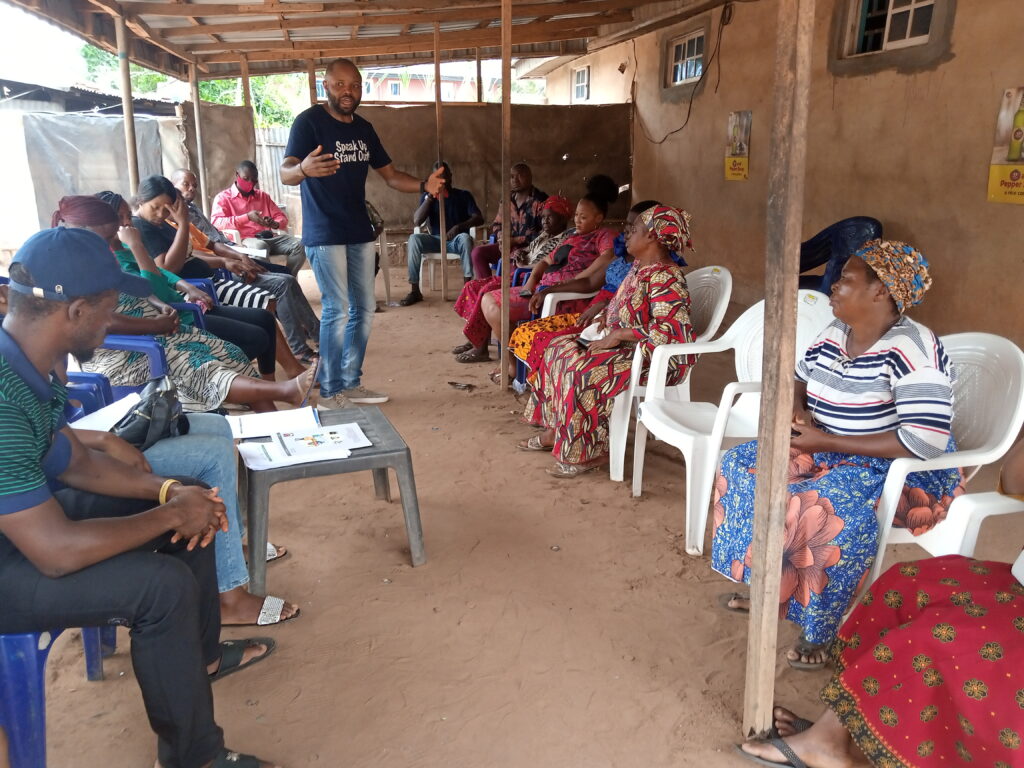Discover how a systems change approach can transform development interventions from temporary fixes to sustainable solutions.
First published on the Catalyst 2030: Igniting Systems Change
In a small village in rural Nigeria, a non-profit organisation built a new well to provide clean water for the community. However, a few months later, the well broke down, and the villagers were back to travelling miles in search of drinking water, often contaminated. The organisation had failed to address the root cause
Pitfalls of development interventions
The above scenario illustrates a common pitfall in development interventions. Despite their good intentions, development organisations and practitioners often fall short in applying best practices to address challenges confronting communities. They focus on symptoms of the problems rather than root causes; designing programmes that target visible challenges while neglecting the underlying issues. This approach leads to short-term solutions that fail to sustain long-term impact.
Developing sustainable and equitable solutions
Development practitioners must move away from surface-level, quick-fix approaches and embrace holistic and transformative systems that address underlying structures, policies, and behaviours. These are essential for leading to sustainable and equitable solutions. When we engage with communities, we must do so with a high sense of empathy. We must also consider the law of holes: “if you find yourself in a hole, stop digging”. Communities are often vulnerable, and our intervention projects must create sustainable impact. If a project seeks to intervene in a community plagued by frequent flooding, providing relief aid to affected homes and communities is only a temporary solution. A more systemic mitigation approach may include projects that prevent flooding, such as restricting buildings in flood-prone areas and addressing drainage infrastructure challenges. While aid may bring immediate relief, it does not prevent future flooding and can create a culture of dependency, which may pose a greater challenge in the long run.
The need for systems approaches
Regular methods of problem-solving often fall short because they tackle issues in isolation. For instance, providing education without addressing poverty, or healthcare without considering social determinants, leads to fragmented and temporary solutions. A transformative, systems change approach, examines the interconnectedness of these issues and aims to transform the entire ecosystem. This approach is crucial for creating lasting change and achieving social justice. Addressing root causes requires a deeper understanding of the complex interplay of factors contributing to community challenges. It involves engaging with local stakeholders, conducting thorough assessments, and developing context-specific solutions.
Key principles in designing transformative projects
1. Holistic Perspective
Systems change requires a comprehensive understanding of the problem, including its root causes and the various factors that sustain it. This means that we must look beyond immediate issues to see the bigger picture.
2. Collaboration and Partnerships
No single entity can drive systems change alone. It is not possible. Projects that create systems change necessitate collaboration across sectors, including government, non-profits, businesses, and communities. By working together, these stakeholders can leverage their unique strengths and resources to create a more significant impact. I have always said that collaboration is our new tribe. It should always be!
3. Innovation and Adaptability
Creating systems change is not a one-size-fits-all solution. It requires innovative thinking and the flexibility to adapt strategies as new information and challenges arise. This dynamic approach ensures that solutions remain relevant and effective over time.
What does a systems approach look like?
Education reform
In many parts of the world, education systems are being reimagined to address not just academic learning but social and emotional development. These initiatives integrate community support, mental health services, and family engagement to create more holistic and supportive environments for students.
Healthcare transformation
Healthcare systems are increasingly shifting focus towards preventive care and addressing social determinants of health, such as housing, nutrition, and employment. This shift from reactive to proactive care reduces disparities and improves overall health outcomes.
How social innovators can drive systems change?
Identify leverage points
Social entrepreneurs and innovators must focus on identifying leverage points within the system where small changes can lead to significant impacts. This could involve policy advocacy, community organising, or technological innovation.
Build cross-sector alliances
Forming alliances with diverse stakeholders can amplify efforts and resources. Social entrepreneurs should seek out partnerships with government agencies, private sector companies, and other non-profits to create a united front for change.
Measure and communicate the impact
To sustain momentum and attract support, it is essential to measure and communicate the impact of systems change initiatives. This includes not only tracking outcomes but also sharing stories of transformation and success.
of the problem, the lack of maintenance skills, and financial resources, that affected the community’s water supply. The organisation failed to develop a sustainable structure that empowered the community to take ownership of the project. Ultimately, the project fell short of its goal.
Some additional dos and don’ts

Dos:
● Engage in thorough needs assessments and context analysis
● Involve local stakeholders in project design and implementation
● Build capacity and transfer skills to local partners
Don’ts:
● Impose preconceived solutions without community input
● Focus solely on symptom relief without addressing underlying causes
● Ignore local context and cultural nuances
Recommendations
● Embrace a root cause approach that prioritises sustainability over quick fixes.
● Invest in capacity building and skills transfer to ensure local ownership and maintenance.
● Foster collaborative partnerships that leverage local knowledge and expertise.
By adopting a systems change approach that addresses underlying problems, development organisations can achieve meaningful and lasting impact, transforming communities and lives for the better. This holistic approach resolves immediate challenges and also builds resilience and empowers communities. With a collaborative effort to address root causes, we can achieve a sustainable impact and build a brighter future for all.

Leave a Reply